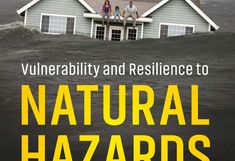Vulnerability and Resilience to Natural Hazards
Sven Fuchs and Thomas Thaler (Eds.)
In recent years there has been growing recognition that disaster risk cannot be reduced by focusing solely on physical hazards without considering factors that influence socio-economic impact. Vulnerability: the susceptibility to the damaging impacts of hazards, and resilience: the ability to recover, have become popular concepts in natural hazard and risk management. This book provides a comprehensive overview of the concepts of vulnerability and resilience and their application to natural hazards research. With contributions from both physical and social scientists it provides an interdisciplinary discussion of the different types of vulnerability and resilience, the links between them, and concludes with the remaining challenges and future directions of the field. Examining global case studies from the US coast to Austria, this is a valuable reference for researchers and graduate students working in natural hazard and risk reduction from both the natural and social sciences.
2018, gebunden
Cambridge University Press (Verlag)
978-1-107-15489-6 (ISBN)
Rezensionen:
“Both vulnerability and resilience are ‘slippery’ topics that, to be useful, need extensive theorizing and careful analysis. This book takes a rigorous and comprehensive approach to their definition and elaboration, thereby making a very valuable contribution to the literature in this field.”
Edmund Penning-Rowsell, Flood Hazard Research Centre, Middlesex University
“This is an essential volume in which leading scholars from three continents grapple with vulnerability to natural hazards in a thorough, no-nonsense, fact-based manner. The Enlightenment tradition lives on despite both populist and post-modern scorn for science. Quantitative and qualitative assessment methods are clearly explained; whilst recent case examples, key messages, and innovative diagrams will please a wide audience.”
Ben Wisner, University College London
“Although being widely used in both risk research and management, the concepts of vulnerability and, particularly, resilience are the subject of ongoing debate with respect to their definition as well as their operationalization. In this intense discourse, few publications have aimed at a systematic view. Against this backdrop, the present book offers a comprehensive and multifaceted approach, and provides an important and timely contribution to the discussion on the relation between the concepts of vulnerability and resilience. Particularly the aspects of scale and time dependence will provide food for thought on their future role in science and practice.”
Jakob Rhyner, United Nations University, Bonn



